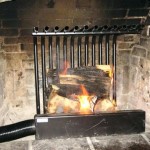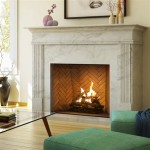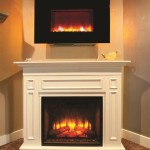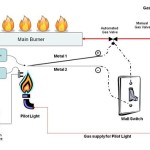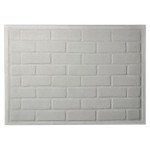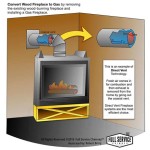Understanding Gas Fireplace Log Sets: A Comprehensive Guide
Gas fireplace log sets provide a convenient and aesthetically pleasing alternative to traditional wood-burning fireplaces. These sets offer the ambiance of a real fire without the hassle of sourcing, storing, and cleaning up wood. This article explores the various aspects of gas fireplace log sets, including their types, advantages, installation considerations, and maintenance requirements.
A gas fireplace log set consists of ceramic or refractory cement logs arranged within a firebox. These logs are designed to mimic the appearance of natural wood, often incorporating intricate details to enhance realism. A burner system positioned beneath the logs provides the source of the flame. The system is connected to a gas line, typically natural gas or propane, and is controlled by a valve that regulates the gas flow and flame height.
Log sets are often selected based on the dimensions of the existing fireplace opening. Manufacturers offer a range of sizes to accommodate different firebox configurations. Careful measurement is crucial to ensure a proper fit and optimal performance. Failure to properly account for dimensions could lead to the set not fitting within the firebox or, potentially, compromising safety and efficiency.
Many modern gas fireplace log sets include additional features designed to improve the user experience. These can include remote controls for adjusting flame height and temperature, built-in blowers to circulate heat, and even electronic ignition systems that eliminate the need for a standing pilot light, contributing to energy savings.
Types of Gas Fireplace Log Sets
Gas fireplace log sets can be broadly categorized into two main types: vented and vent-free (also known as ventless). These types differ significantly in their installation requirements, efficiency, and safety considerations.
Vented Gas Log Sets: These sets require a fully functional chimney or vent system to exhaust the combustion byproducts, such as carbon monoxide and water vapor, to the outside. Vented sets produce a more realistic flame appearance compared to vent-free models because they draw air from the room, which creates a larger, more flickering flame. However, this also means that they are less efficient, as a significant portion of the heat is lost up the chimney. Installation of vented log sets generally involves connecting the gas line to the burner and ensuring the vent system is properly functioning and unobstructed. Regular chimney inspections are recommended to maintain safety and efficiency.
Vent-Free Gas Log Sets: Also known as ventless log sets, vent-free models do not require a chimney or vent system. They are designed to burn cleaner and more efficiently, releasing heat directly into the room. Vent-free log sets include an Oxygen Depletion Sensor (ODS) that shuts off the gas supply if the oxygen level in the room drops to an unsafe level. While these sets offer greater installation flexibility and higher heating efficiency, they also produce a smaller, less realistic flame. Furthermore, the water vapor produced during combustion can increase humidity levels within the room. Local codes and regulations often dictate restrictions on the use of vent-free systems, particularly in smaller spaces or enclosed areas. It is crucial to verify compliance with all applicable regulations before installation.
Beyond vented and vent-free classification, log sets are further differentiated by the material used in their construction. Ceramic fiber logs are lightweight and offer excellent heat resistance, while refractory cement logs are more durable and closely resemble the texture and weight of real wood. The choice of material influences the set's longevity, appearance, and heat radiation characteristics.
Advantages of Using Gas Fireplace Log Sets
Gas fireplace log sets offer several advantages over traditional wood-burning fireplaces. These benefits range from convenience and ease of use to environmental considerations and cost savings.
Convenience and Ease of Use: A primary benefit is the convenience. Gas log sets eliminate the need to source, chop, and store firewood. Starting a fire is as simple as turning a knob or pressing a button, offering instant heat and ambiance without the mess and effort associated with wood-burning fireplaces. This ease of use makes them an attractive option for individuals with limited mobility or time.
Reduced Maintenance: Gas log sets require significantly less maintenance compared to wood-burning fireplaces. There is no ash to clean up, no need to sweep the chimney as frequently (though regular inspection is still important), and no creosote buildup to worry about. This reduced maintenance translates to time savings and lower overall operating costs.
Precise Temperature Control: Many gas log sets feature adjustable flame height and temperature settings, allowing users to control the amount of heat produced and maintain a comfortable room temperature. This level of control is not possible with wood-burning fireplaces, which can be difficult to regulate and often result in overheating.
Environmental Benefits: Gas fireplaces generally produce fewer emissions than wood-burning fireplaces, contributing to better air quality. While natural gas and propane are fossil fuels, their combustion is cleaner than burning wood, releasing fewer particulate matter and greenhouse gases. This makes gas fireplaces a more environmentally responsible heating option in many situations.
Cost-Effectiveness: While the initial cost of a gas log set may be higher than that of a wood-burning fireplace, the long-term operating costs can be lower. Gas is often less expensive than firewood, and the reduced maintenance requirements further contribute to cost savings. Furthermore, the energy efficiency of vent-free models can result in lower heating bills compared to traditional fireplaces.
Installation and Safety Considerations
Proper installation and adherence to safety guidelines are paramount when installing and using gas fireplace log sets. Incorrect installation can pose serious safety risks, including gas leaks, carbon monoxide poisoning, and fire hazards.
Professional Installation: It is strongly recommended that a qualified and licensed professional install gas fireplace log sets. A professional will ensure that the gas line is properly connected, the burner is correctly positioned, and the vent system (for vented models) is functioning safely and efficiently. They will also be familiar with local codes and regulations regarding gas appliance installation.
Gas Line Connections: Gas line connections must be made by a qualified professional using appropriate fittings and materials. Leak testing is essential to ensure that there are no gas leaks. A gas leak can create a fire or explosion hazard and pose a serious health risk due to the potential for asphyxiation.
Ventilation Requirements: For vented log sets, the chimney or vent system must be inspected and cleaned regularly to ensure proper ventilation. Obstructions in the vent system can cause a buildup of carbon monoxide, a colorless and odorless gas that is highly toxic. Carbon monoxide detectors should be installed in the home, regardless of whether the log set is vented or vent-free.
Oxygen Depletion Sensor (ODS): Vent-free log sets rely on an ODS to shut off the gas supply if the oxygen level in the room drops to an unsafe level. It is crucial to ensure that the ODS is functioning correctly and that the vent-free log set is installed in a sufficiently large room, as specified by the manufacturer. Never obstruct the air vents on a vent-free appliance.
Clearances and Combustible Materials: Maintain adequate clearances between the gas log set and any combustible materials, such as furniture, curtains, and wall coverings. Follow the manufacturer's instructions regarding minimum clearance distances to prevent fire hazards. Never place flammable objects on or near the fireplace.
Regular Maintenance: Gas log sets require regular maintenance to ensure safe and efficient operation. This includes cleaning the burner, inspecting the gas line connections, and checking the ODS (for vent-free models). Consult the manufacturer's instructions for specific maintenance recommendations.
Selecting the appropriate gas fireplace log set requires careful consideration of factors such as venting requirements, desired heating efficiency, aesthetic preferences, and budget. Proper installation and adherence to safety guidelines are essential to ensure safe and reliable operation. Regular maintenance will extend the lifespan of the log set and maintain its performance.
Choosing between vented and vent-free models requires evaluating individual priorities. While vented sets offer a more realistic flame, they are less efficient and require a functional chimney. Conversely, vent-free sets offer higher efficiency and greater installation flexibility but produce a smaller flame and require careful attention to ventilation and room size.
The material used in the log set, whether ceramic fiber or refractory cement, influences its durability, appearance, and heat radiation. Selecting a material that aligns with aesthetic preferences and performance expectations is key to maximizing satisfaction with the gas fireplace.

Napoleon Gl18e Vented Gas Log Set 18 Inch

Majestic Vdy Duzy Series Vented Gas Log Set

Rh Peterson 48 Inch Golden Oak Designer Plus Log Set Fine S Gas
-Vented_q8bs-66_pt4w-91_taba-3o_b9mo-7v_1y8x-46_khjt-jw.jpg?strip=all)
Bonfire 52 Inch Gas Log Set For Masonry Fireplaces

Monessen Charisma Gas Log Set Fireside Hearth Home

Peterson Real Fyre 30 Inch Charred Oak Gas Log Set With Vented Natural Ansi Certified G46 Burner Manual Safety Pilot Bbqguys Sets Fireplace Logs

Pleasant Hearth 18 Dual Fuel Wildwood Vent Free Gas Log Set 30 000 Bt

Rasmussen Wb Kit White Birch Series Complete Fireplace Log Set

Hargrove Classic Oak Vented Gas Fireplace Logs 15 Inch

American Gas Log Dundee Oak 18 In Vented Natural Fireplace Set With Complete Kit Manual Match Lit Do18hdmtch The Home Depot


